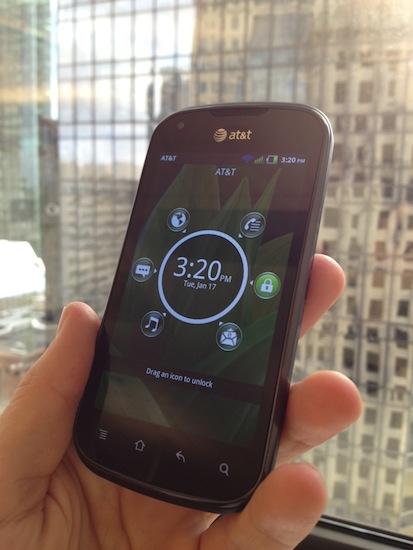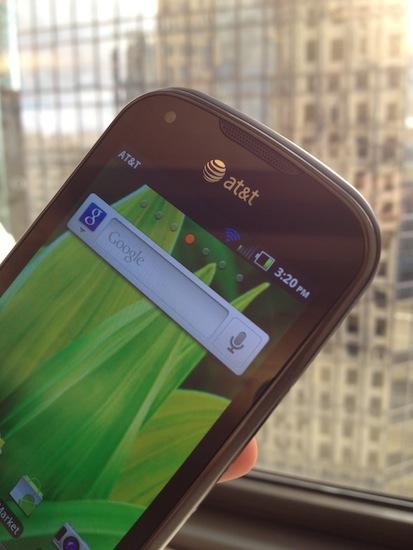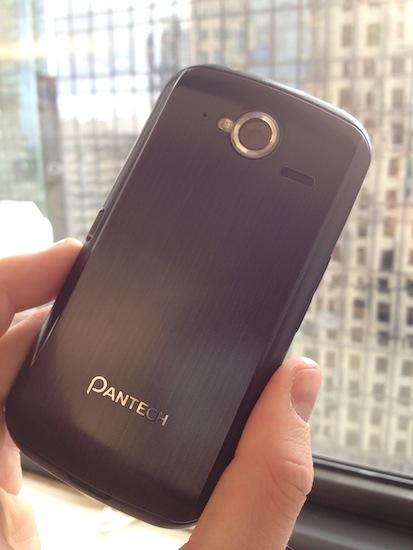
The Pantech Burst is the manufacturer's second 4G LTE phone, and the first one to arrive on AT&T. Available on January 22nd, it can be had for $49.99. Better yet, if you're in the market for a tablet, consider Pantech's waterproof option, the LTE-powered Element. You can snag both for $249.99 (with two-year AT&T agreements) - a $100 savings over purchasing separately.
I'll be the first to criticize mid-range Android phones that pack poor hardware like 600 MHz processors, 3.2-inch displays, and the like. Regardless of the price point, sub-par hardware just diminishes the overall experience (particularly with a spec-hungry OS like Android). But the Burst is different. The 1.2 GHz dual-core processor, 4-inch Super AMOLED display, and 720p HD capabilities are welcome features on a device that's well under the $100 price point. Perhaps more importantly and like the Pantech Breakout on Verizon, Burst brings AT&T's 4G LTE connectivity to the masses.
I've had some time to get to know Pantech's newest smartphone, and here's what I've discovered:
- The 1.2 GHz dual-core processor is nice and fast, and is a welcome feature in a phone that's $49.99. I've seen no lag whatsoever, even while throwing it through some pretty tough paces. The usual unofficial speed tests - pinch-to-zoom, browsing through apps, and surfing the web, to name a few - were flawless.

- On design alone, this isn't a phone that you'd be wowed by if you caught it in passing. The left spine houses the volume rocker, and you'll find the microUSB charging port halfway up the right spine. The power button and 3.5mm headphone jack are on the top of the phone, and the 5-megapixel camera and flash can be found on the back. You'll find no metal accents or anything to give it a premium feel, though the plastic battery cover is styled to resemble metal.
- Burst comes with Android 2.3.5, and packs the Pantech skin that we've seen from the Pocket and Breakout. It's not my favorite by any means and doesn't compare to the more fleshed out variants (think Samsung's TouchWiz, HTC Sense, and Motorola's UI here), but it works given the phone's price point. It's reasonably fast, and throughout the time I've had it, I haven't been able to chalk the UI up to any irregular slowdowns. For $50, you really can't get a better Android phone (markdowns excluded). If this device were $199.99, I'd be singing a different tune.

- The 5-megapixel camera doesn't take particularly impressive still shots, but the 720p HD video recording is a nice feature to have. Image quality has been decent on both fronts; it's not going to replace an actual camera, but it performs well provided lighting is good.
- The Burst packs AT&T's 4G LTE connectivity, though I haven't had time to put it through its paces just yet. Speeds typically range between 4 and 9 Mbps in the Charlotte metro area, and I expect to see the same from Burst.
- With a 1,650 mAh battery, I expect Burst's overall longevity to be decent with regular use. I haven't had the chance to do formal testing just yet, but given the moderate display size and features, I'm guessing we'll see roughly 10-12 hours out of this device.
In essence, his is a supercharged Pantech Breakout for AT&T customers, and while the price tag would lead you to believe that the Burst is just another mid-range Android phone, the performance says otherwise. The design isn't going to amaze everyone, but this phone offers a great initial impression of Android and could lead buyers to stay on the platform as the battle between Android, iOS, and Windows Phone heats up in the future.
Check out the unboxing, and stay tuned for the full review!